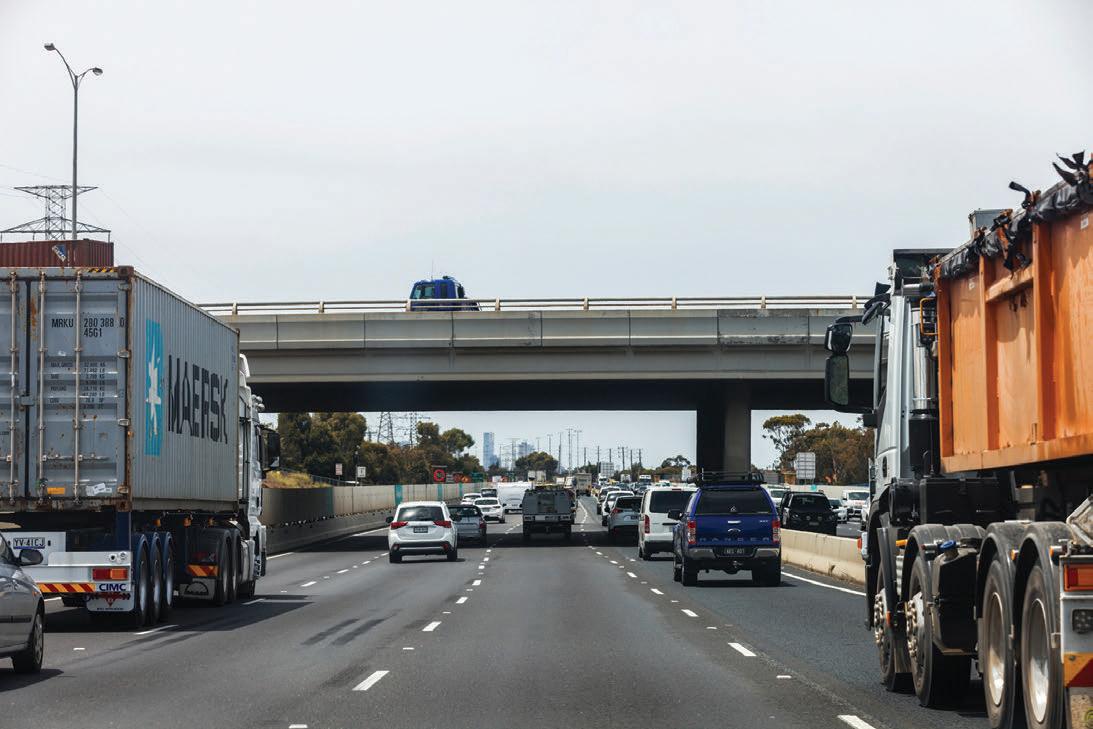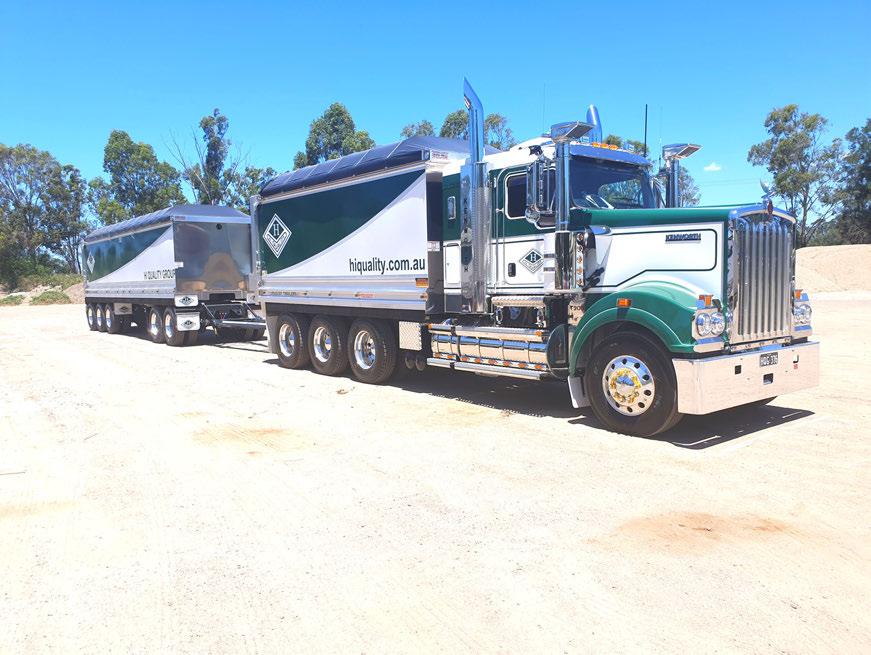
4 minute read
Stars are finally aligned for heavy vehicle reform
of national heavy vehicle law theoretically should be completed, with draft law due to be presented to state and federal ministers this year.
This is essential to restore credibility and confidence in the NTC from transport groups frustrated by little to no decisions, direction, or development in years.
AS we enter the dog days of summer and state and federal politicians and policymakers return to work for the start of the parliamentary year ahead, it’s worth reflecting on the tremendous opportunities that exist in 2023 for genuine heavy vehicle reform after years of delay.
The election of the Albanese government last May, along with state elections in 2022 that saw Labor win or retain government in South Australia and Victoria, means the ALP now occupies the treasury benches federally and in six of the seven Australian states and territories. And that number may grow to seven of seven if Labor wins the New South Wales state election next month, as current polling suggests it will.
This would see the same party in government in every state and federal jurisdiction, providing an opportunity for consensus and action in numerous policy areas, including heavy vehicle reform.
This opportunity presents in the context of state and federal transport policy-making that has generally been in a holding pattern for over eight years, particularly in the critical areas of heavy vehicle national law, licencing, and productivity.
The National Transport Commission’s latest review
Licencing laws are also in a box seat for overhaul, with several transport groups aligned on the need to focus attention on skills and training as qualifiers for heavy vehicle licencing instead of experience alone.
Whilst predominantly a state or territory issue, our licencing regulations and requirements must be changed to attract new and young people to the transport profession, with minimum thresholds introduced to require days – not hours – of practical, behind the wheel training by qualified instructors for candidates to be granted a heavy vehicle licence.
This is a key policy area for the VTA in 2023, with our time-based graduated Driver Delivery program licencing model validated through its extension by the Victorian Government, and funding for forklift and other drivers and logistics workers allocated involving a similar minimum threshold model when it comes to time spent in the classroom and under supervised, practical instruction.
It is essential that we change the narrative that experience alone makes a driver better or safer. This can only be achieved by introducing new licencing laws in as many jurisdictions as possible that prioritises skills and training over experience.
These years of delay by some state and federal bodies have had massive productivity implications for operators that are already being hammered by rising costs, chronic worker shortages, and a shrinking capacity to grow or at least maintain slim margins.
This is exacerbated by some of the safeguards in place to protect operators being under attack, such as we saw earlier this month with the Grattan Institute’s short-sighted calls for the Fuel Tax Credit (FTC) to be halved to reduce the budget deficit and reach reduced emissions targets sooner.
As well as increasing prices for households already under pressure from higher interest rates and inflation, all such an FTC reduction would achieve to is increase the tax burden on operators that already pay higher registration fees and a Road User Charge, forcing them to raise their prices, which ultimately gets passed back onto consumers through more expensive goods and services.
Often overlooked in discussions around heavy vehicle reform is that transport operators and the industry groups that advocate for them are the customers of the bureaucracy, and as customers we’ve generally been poorly served in recent years.
Through all this we’ve continued to service the needs of our customers and Australian consumers, getting the job done and servicing the growing freight task.
With there now being general political consensus in place across the length and width of Australia there has never been a better or more opportune time to attain the reforms that have evaded the transport industry for years.

The results will be a safer industry that provides productivity, efficiency, and sustainability dividends for parties to every freight transaction including operators, customers, and consumers.











DID you know that many business owners don’t realise that their businesses are valuable?




Often business owners simply close down and walk away from their business without cashing-in on the goodwill that they have built up in their business over many years. What a shame, all those years of hard work; and no reward for their efforts. If they had only known that there was a buyer out there for their business.
Some business owners never plan for the day that they will sell out. Oh! They plan to sell, but they just don’t know how, or when, or who they will sell to, or how much the business should sell for. There is no plan in place, just a vague intention that one day they will sell.
Do you fall into any of these groups? Or do you have an exit plan for how you intend to maximise the reward that you deserve when it is time to move on?
What is an exit strategy?
Having a plan on how and when you will sell your business is an exit strategy. An exit strategy allows you to sell your business on your terms, when it suits you, and when you are ready. Without an exit strategy in place you will be a passive seller waiting and hoping that a buyer will come along and solve all of your problems. Having a proper exit strategy in place will allow you to cash-in quickly, easily, and scientifically.
Having an exit strategy will enable you to:
• Get the best possible price

• Avoid disruption to daily trading
• Avoid time wasters
• Save money
• Sell quickly
How to create an exit strategy

So how do you create an exit strategy? You can talk to an accountant, business coach, lawyer or business broker. Business brokers work in the market every day, and they know what your unique busi- ness will require to be ready to sell for maximum value. They can advise on the 17 areas that you need to consider when selling, and how to implement your plans.

An exit strategy includes:
• A target date
• Listing targeted potential buyers
• Knowing what potential buyers want
• Setting an appropriate asking price
• Preparation of financial accounts and data
• Creation of a marketing plan and tactical execution timetable
Many business owners never get around to planning how and when they will sell their businesses. They procrastinate, and let other issues take priority.
Business owners with an exit plan in place are proven to be more effective business owners. This is because they have focus and direction. They are not aimless, because they know where the business is headed, and exactly what they must do to achieve their goals. Having direction provides confidence, and confidence enhances performance.
Free e-book: Twelve Tips for Selling Your Business
Download our free e-book called ‘Twelve Tips for Selling Your Business’ at benchmarkbusiness.com.au.










